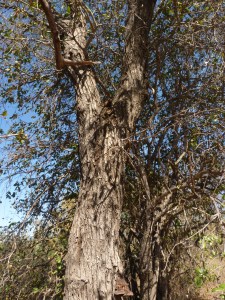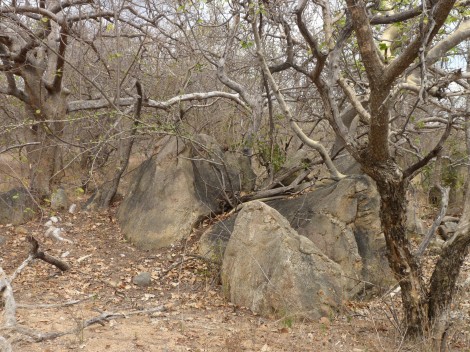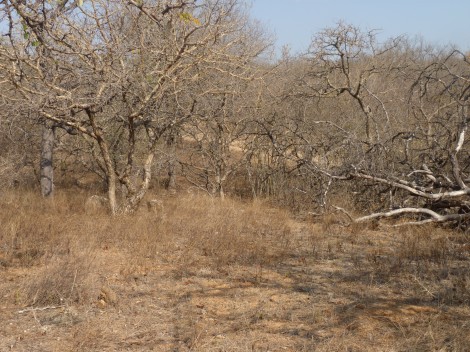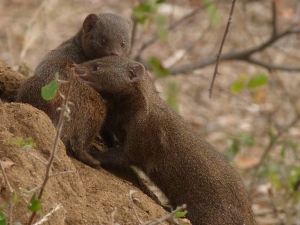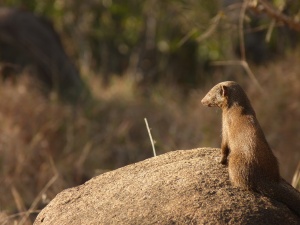Wherefore art thou mongoose?
This was meant to be published in early October but my internet connection wasn’t good enough for upload photos, so here it is now.
Oh the frustrations of finding dwarf mongoose in the bush. To start off, they are pretty small – less than 30cm in length! Add to this, that they are a lovely brown colour that happens to blend in quite well with wood and the ground. In addition, they can be very quiet. I’ve been with a group before and they have gone silent, leading me to believe that they have moved but actually they’re just being quiet. So when you’re looking for them, that’s no help.
It’s easiest to look for them in the morning and just before sunset, as they will either at or near their sleeping refuges. At these times of day, it is a case of making the rounds within their territory and hoping you catch them before they leave (in the morning) or go to sleep (in the evening). This usually works, but occasionally the group will be using a refuge that we don’t know of, so the theory falls down there.
During the day, it gets a bit more difficult as you have got to walk throughout their territory calling for them. Yes, we call out to them and we actually call “Mongoose”! It sounds a little bizarre, but they’re habituated to come to that call and receive a little bit of food for it. Some groups are great, they’ll respond to your call with enthusiasm. I have had one group come running to me from almost 50 metres away. On the other hand, I have been right next to a group and been completely ignored by them.
So you still have to rely on your eyes and ears for any tell-tale signs of mongoose presence. The slightest rustling can get me suddenly veering off my path and calling hopefully for mongoose. I say hopefully because it is usually a couple of birds that I’m scaring off. They do make small contact calls to each other, but you usually can’t hear them unless you are fairly close.
As for seeing them? Almost no chance unless they’re moving between foraging spots or in an obvious sentinel position. Take these photos below, can you spot the mongoose? To myself, the mongoose in the first photo is very obvious, and in the second photo, still quite noticeable. But usually, they’re hidden amongst the rocks or branches and it’s a bit more of a challenge.

